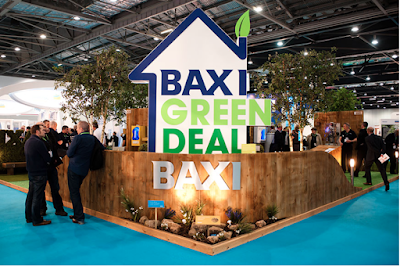The winners will be chosen from the submitted entries by a 4-man panel made up of graphic designers and design professionals from Display Wizard. The winners will be evaluated on how their design/essay conveys the following: consistent branding across displays; appeal to prospective students and consideration of the stand dimensions in the design proposal.
The brief:
Need to consider Leeds College of Art's current marketing collateral so all branding, colour and key information is consistent across all platforms. Past winners:
Collaboration between two students at Blackburn College, winning £500 and a Design Wizard internship. Their work was also printed for their college and displayed at trade shows, UCAS fairs and integrated into other marketing collateral.
Second Place
A slightly more contemporary and traditional approach, which sadly did not win the first place. This entry won £250 and the banner printed for Edinburgh College of Art, yet did not receive an internship. To me, this design looks much more aesthetically pleasing, with balanced composition and considerations to design history.
 |
| Much more articulate concept, yet little justification or direct consideration for the target audience, unlike the winner's. |
Winning £50 and her banner's printed for University of Reading, a clearly modernist approach has been taken, incorporating bold graphics and the suggestion of Swiss Design. The use of Helvetica contributes to making the pieces feel inclusive of everyone and progressive, yet they are still lacking a certain spark to make them really eye catching.
Introducing larger typography better communicates the message of the brand, as we can visibly see it. However, the typography and layout compositions are uninspiring and dull, breaking of corporate boredom. There is no conviction in their statements, with additional information featuring at an illegible type size unless you go up close.
The tactic of small type could be successful for driving consumers into the booth, yet this would require a well known company name or other design quality to first attract the viewers attention, prompting them to want to read more.
Another company introducing basic colour schemes to distinguish between services. The consistent design style, featuring a large scale standardised photograph, typeface and block colour background, links each banner together, telling the viewer they are all linked in some way. Their message is "central to your success", which is communicated subtly as hand written type on the t-shirt of each individual featured.
More unique ways of creating promotional stands:
Hesco is a security and storage facility for commercial industry and military use. Their stand communicates a robust, 'no-messing' quality at a glance by incorporating heavy duty materials, such as corrugated sheet metal, cargo carriers and solid iron doors. Rather than the standard floor the interior of the cargo station has been opened up and incorporates a plywood base and walls. A simple graphic banner works in harmony, using the same colour scheme as the cargo, brand identity and even the chairs inside by the green light glow. A very powerful, professional and demonstrative quality shows how creative stands can become. Hesco did not even need to say what it was they offer, the subtle communication and the intrigue of the stand would lead the viewer in without the need of knowing.
Looking at the competition is proving useful in determining what sets LCA out from the crowd. Specialist art universities all try to communicate the idea of 'creativity' in one way or another. Plymouth College of Art does this in an aspirational way by showing degree work at the UCAS fair, targeted Level 3 students. The engaging and stimulating booth suggests that they can create work like this by studying at Plymouth, as well as providing an exciting trigger to enter the booth and start conversation with the sales people. The banner's and booth walls are composed of fashion illustrations, all following a monochrome, high contrast colour scheme, allowing the red of 'Plymouth College of Art' stand out as colour in the dark.
UAL are an establishment which has the benefit of relaying on reputation, name and history, meaning a simple black and white colour scheme is perfectly appropriate for them. They do not need to show examples of work, they do not need to shout about alumni, so they have the benefit of not needing to promote themselves, or else everyone will want to study there. The bold structure of the black and white contrasts with the heavy san-serif logotype, large and prominent taking up half of the backdrop. Extremely simplistic and minimal, photography and additional 'sales tactics' are distributed through hand outs of tote bags, brochures and roll up posters, meaning they are not just fixed to one stationary point in the exhibition context. Their typography is extremely legible from a distance, maintaining a uniformed link with all other branding.
Despite still being quite an eye-sore, these promotional banners are incorporating crisp photography and repeated structure. The geometric elements encase the garments which are trying to be sold, yet the typographic communication is hidden amongst the clutter of colour and shapes. Black and white photography gives this stand a much classier look, suggesting tradition and honesty through the removal of colour with an air of nostalgia present. Sadly this is negated by the styling and other design elements, which need to be as equally considered as colour, type etc.
It is worth noting that Display Wizard is a Preston based company, which possibly swayed the judges to go for Blackburn's entry. The judges are composed of graphic designers and design professionals from the Display Wizard team, so it needs to appeal to what they think the target audience wants; as well as appropriate design considerations for our program's niche.




















No comments:
Post a Comment